Abstract
The Smith diffuse variant and the wound mucoid strain of Staphylococcus aureus were shown to exhibit serologically distinct capsules. The Welwood and K-6 strains of S. aureus were tested to determine their capsular types. Both Welwood and K-6 were found to be representative of the Smith capsular type. An additional 13 isolates of S. aureus from mice were tested. Gel double-diffusion tests and immunoelectrophoresis of staphylococcal antigens disclosed the possible existence of at least two additional capsular types. Passive hemagglutination tests carried out with cells sensitized with 1 mg of antigen per ml showed a multiplicity of cross-reacting antigens. However, cells sensitized either with 0.1 or 0.05 mg of antigen per ml and reacted with antisera absorbed with 10 or 1 μg/ml showed the presence of a specific antigen in each strain of S. aureus. Corroborative evidence for a multiplicity of capsular types was obtained by the specific capsular reaction. At least four capsular types of S. aureus were found. The prototypic strains for these antigens are the RLM or wound strain, the Smith diffuse strain, and mouse strains designated 36T and 43R. We propose to designate these types 1, 2, 3, and 4, respectively.
Full text
PDF
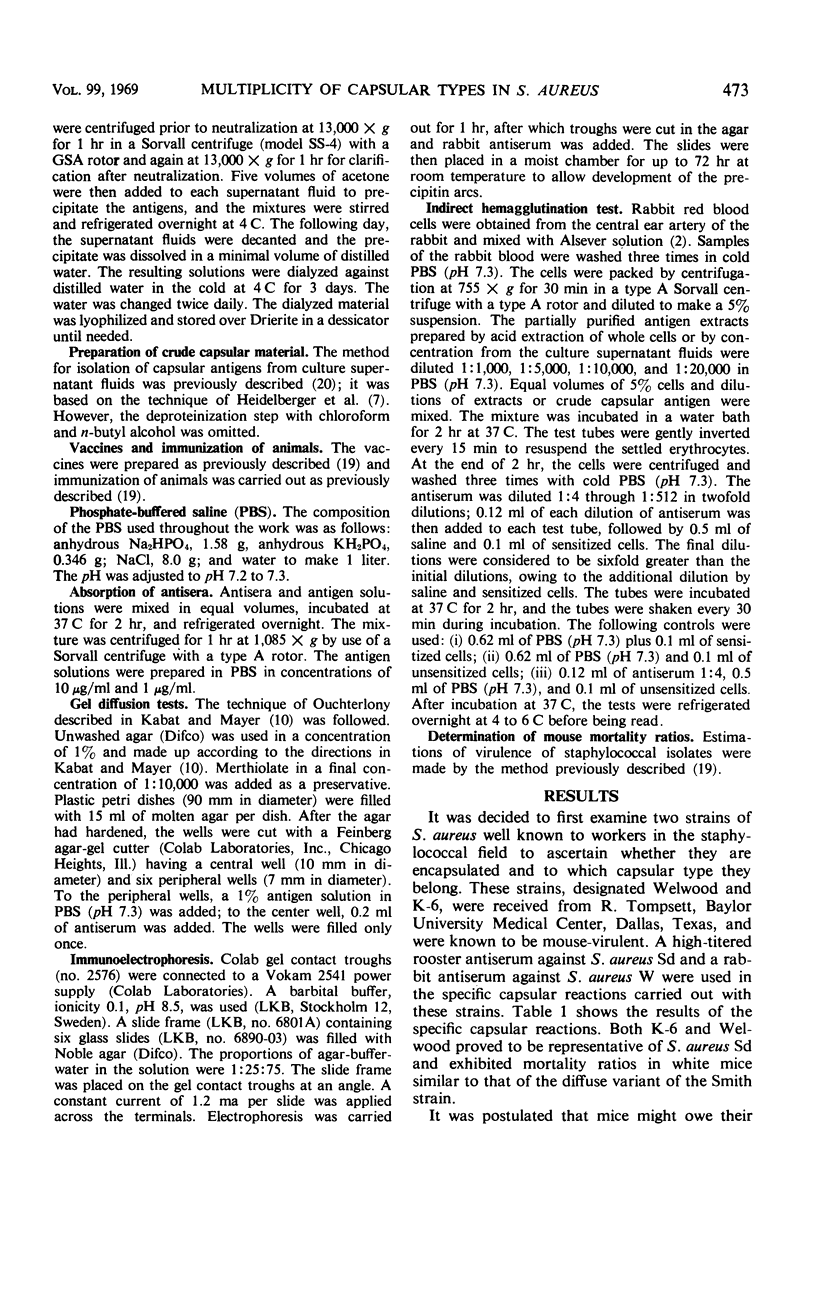
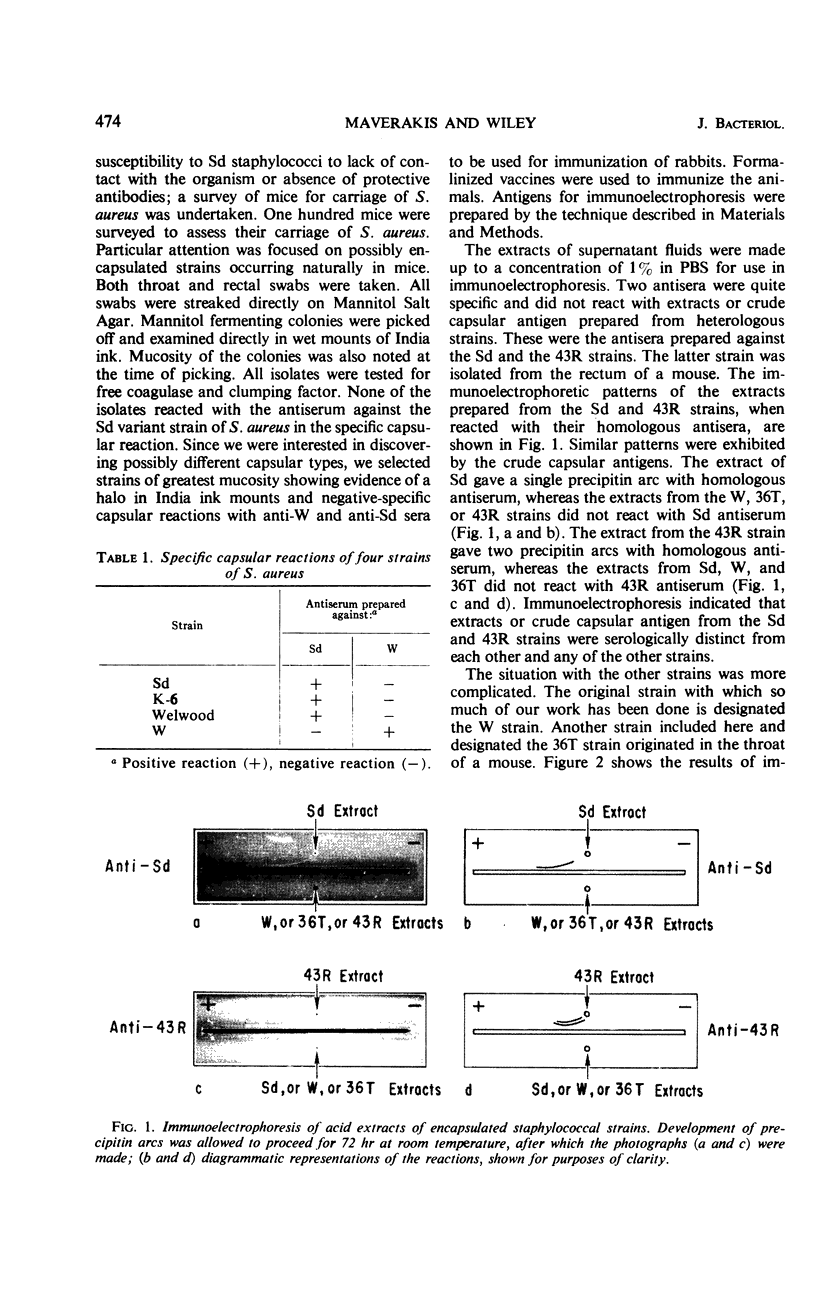
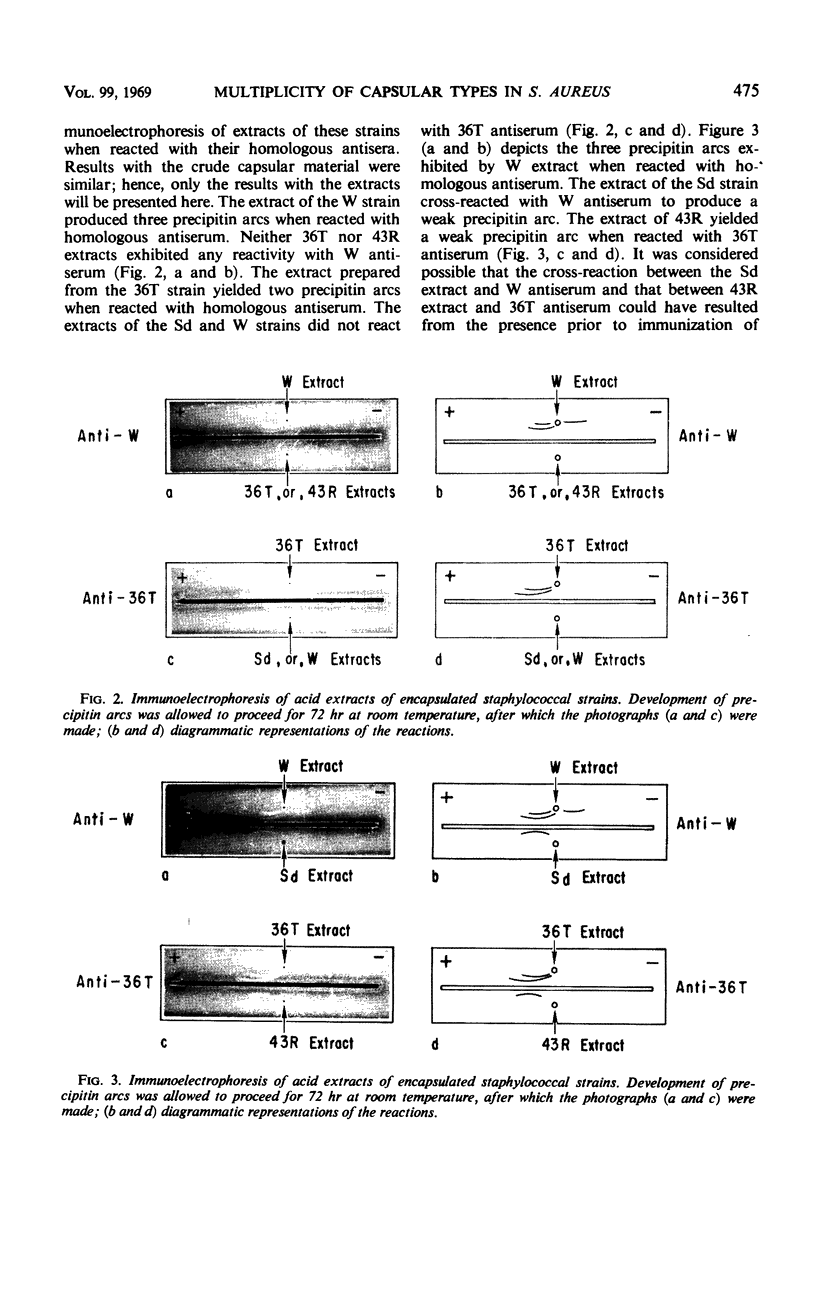


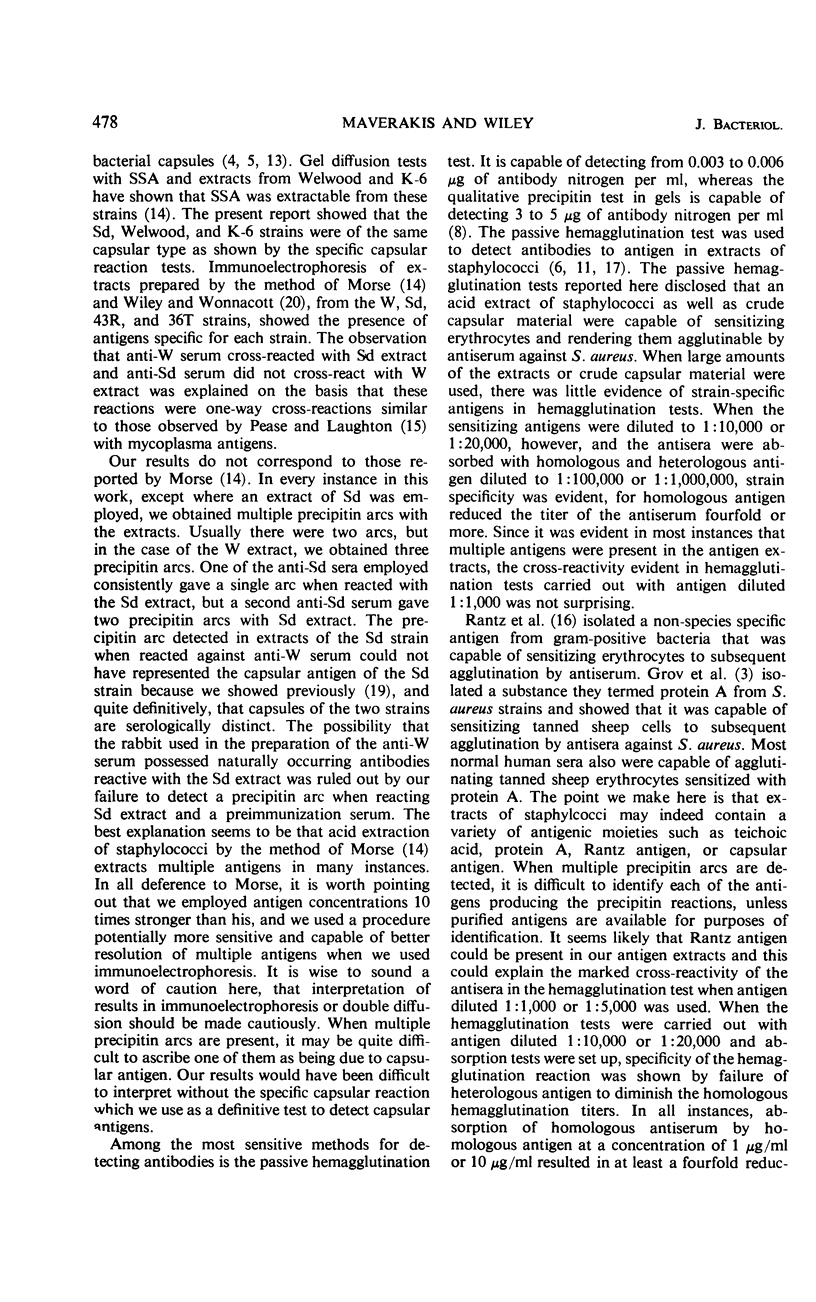
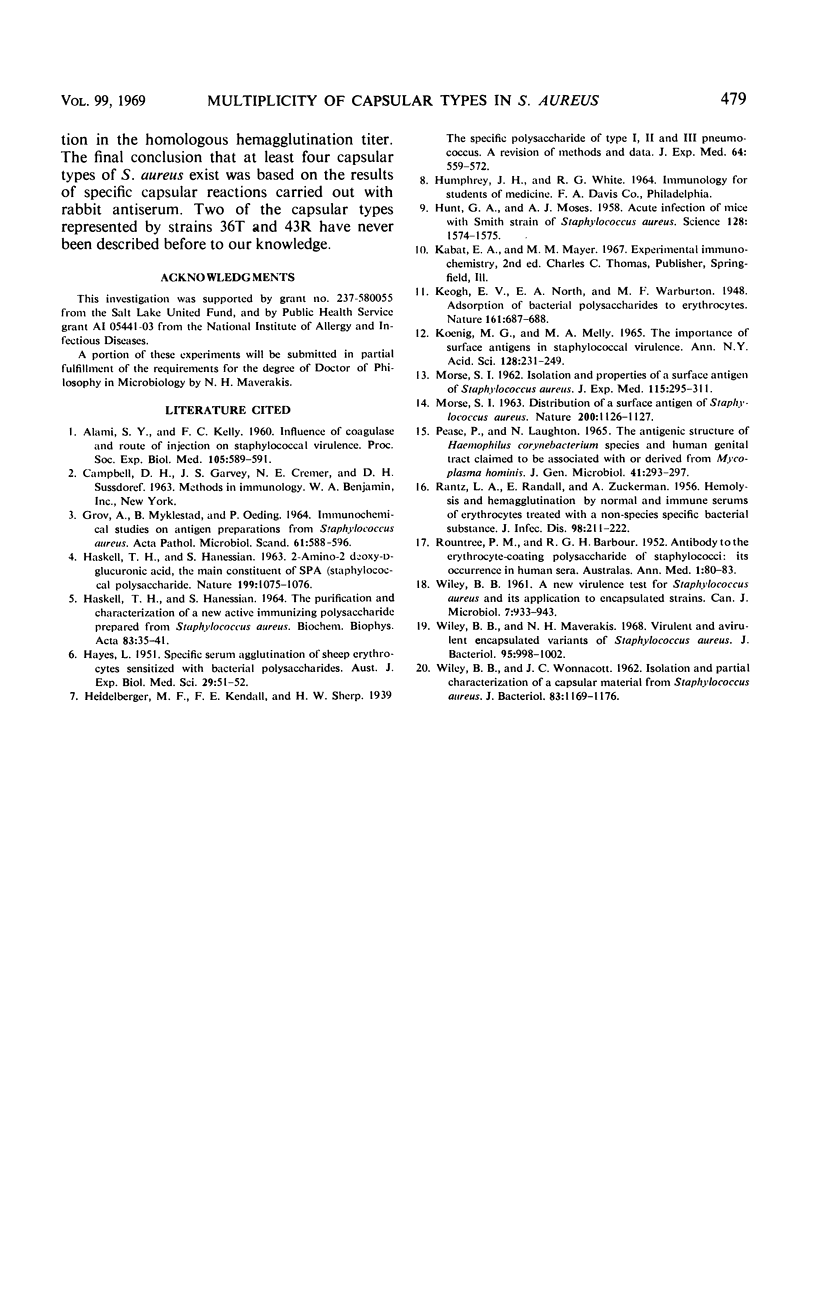
Images in this article
Selected References
These references are in PubMed. This may not be the complete list of references from this article.
- ALAMI S. Y., KELLY F. C. Influence of coagulases and route of injection on staphylococcal virulence in mice. Proc Soc Exp Biol Med. 1960 Dec;105:589–591. doi: 10.3181/00379727-105-26186. [DOI] [PubMed] [Google Scholar]
- GROV A., MYKLESTAD B., OEDING P. IMMUNOCHEMICAL STUDIES ON ANTIGEN PREPARATIONS FROM STAPHYLOCOCCUS AUREUS. 1. ISOLATION AND CHEMICAL CHARACTERIZATION OF ANTIGEN A. Acta Pathol Microbiol Scand. 1964;61:588–596. doi: 10.1111/apm.1964.61.4.588. [DOI] [PubMed] [Google Scholar]
- HASKELL T. H., HANESSIAN S. 2-AMINO-2-ISOXY-D-GLUCURONIC ACID, THE MAIN CONSTITUENT OF SPA (STAPHYLOCOCCAL POLYSACCHARIDE ANTIGEN). Nature. 1963 Sep 14;199:1075–1076. doi: 10.1038/1991075a0. [DOI] [PubMed] [Google Scholar]
- HASKELL T. H., HANESSIAN S. THE PURIFICATION AND CHARACTERIZATION OF A NEW ACTIVE IMMUNIZING POLYSACCHARIDE PREPARED FROM STAPHYLOCOCCUS AUREUS. Biochim Biophys Acta. 1964 Mar 2;83:35–41. doi: 10.1016/0926-6526(64)90048-5. [DOI] [PubMed] [Google Scholar]
- HAYES L. Specific serum agglutination of sheep erythrocytes sensitized with bacterial polysaccharides. Aust J Exp Biol Med Sci. 1951 Jan;29(1):51–62. doi: 10.1038/icb.1951.7. [DOI] [PubMed] [Google Scholar]
- HUNT G. A., MOSES A. J. Acute infection of mice with Smith strain of Staphylococcus aureus. Science. 1958 Dec 19;128(3338):1574–1575. doi: 10.1126/science.128.3338.1574. [DOI] [PubMed] [Google Scholar]
- Koenig M. G., Melly M. A. The importance of surface antigens in staphylococcal virulence. Ann N Y Acad Sci. 1965 Jul 23;128(1):231–250. doi: 10.1111/j.1749-6632.1965.tb11641.x. [DOI] [PubMed] [Google Scholar]
- MORSE S. I. DISTRIBUTION OF A SURFACE ANTIGEN OF STAPHYLOCOCCUS AUREUS. Nature. 1963 Dec 14;200:1126–1127. doi: 10.1038/2001126a0. [DOI] [PubMed] [Google Scholar]
- MORSE S. I. Isolation and properties of a surface antigen of Staphylococcus aureus. J Exp Med. 1962 Feb 1;115:295–311. doi: 10.1084/jem.115.2.295. [DOI] [PMC free article] [PubMed] [Google Scholar]
- Pease P., Laughton N. The antigenic structure of Haemophilus and Corynebacterium species from the human genital tract claimed to be associated with or derived from Mycoplasma hominis. J Gen Microbiol. 1965 Dec;41(3):293–297. doi: 10.1099/00221287-41-3-293. [DOI] [PubMed] [Google Scholar]
- RANTZ L. A., RANDALL E., ZUCKERMAN A. Hemolysis and hemagglutination by normal and immune serums of erythrocytes treated with a nonspecies specific bacterial substance. J Infect Dis. 1956 Mar-Apr;98(2):211–222. doi: 10.1093/infdis/98.2.211. [DOI] [PubMed] [Google Scholar]
- ROUNTREE P. M., BARBOUR R. G. H. Antibody to the erythrocyte-coating polysaccharide of staphylococci; its occurrence in human sera. Australas Ann Med. 1952 May;1(1):80–83. doi: 10.1111/imj.1952.1.1.80. [DOI] [PubMed] [Google Scholar]
- WILEY B. B. A new virulence test for Staphylococcus aureus and its application to encapsulated strains. Can J Microbiol. 1961 Dec;7:933–943. doi: 10.1139/m61-118. [DOI] [PubMed] [Google Scholar]
- WILEY B. B., WONNACOTT J. C. Isolation and partial characterization of a capsular material from Staphylococcus aureus. J Bacteriol. 1962 Jun;83:1169–1176. doi: 10.1128/jb.83.6.1169-1176.1962. [DOI] [PMC free article] [PubMed] [Google Scholar]
- Wiley B. B., Maverakis N. H. Virulent and avirulent encapsulated variants of Staphyococcus aureus. J Bacteriol. 1968 Mar;95(3):998–1002. doi: 10.1128/jb.95.3.998-1002.1968. [DOI] [PMC free article] [PubMed] [Google Scholar]





